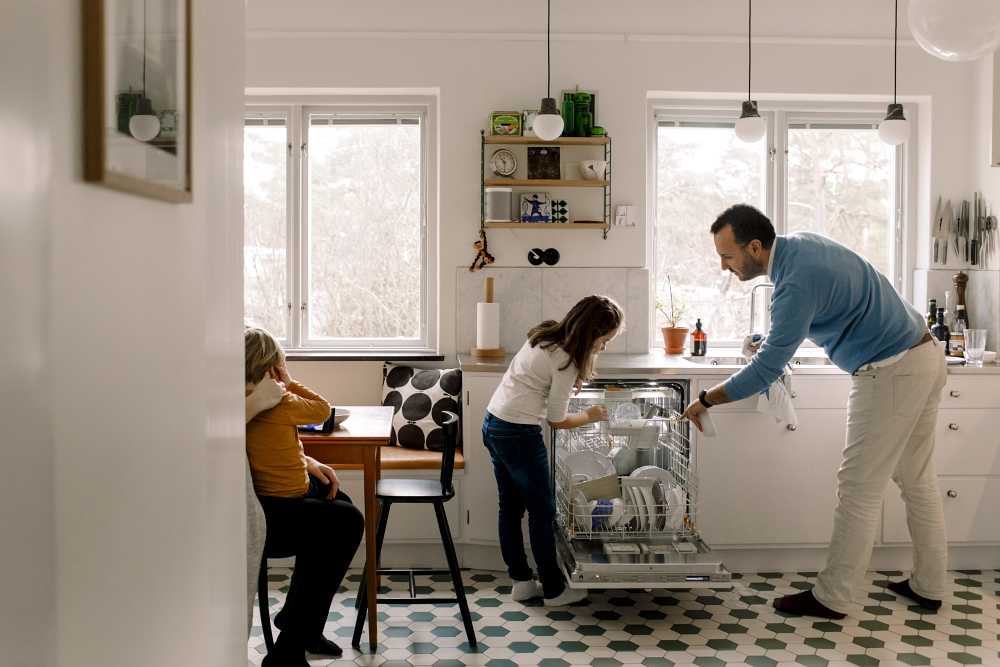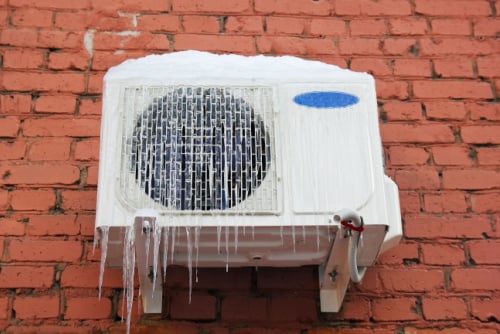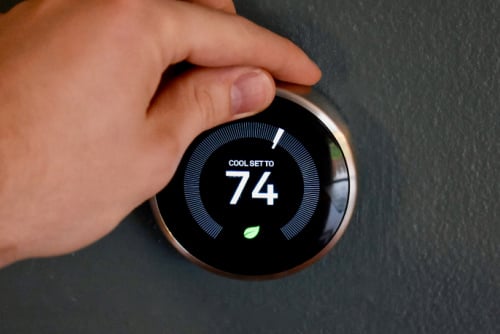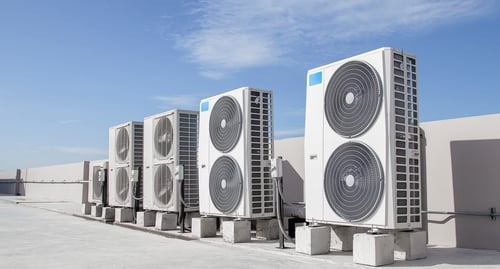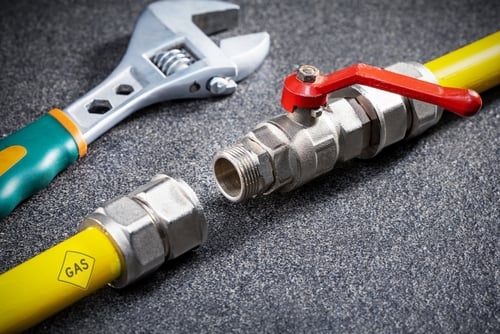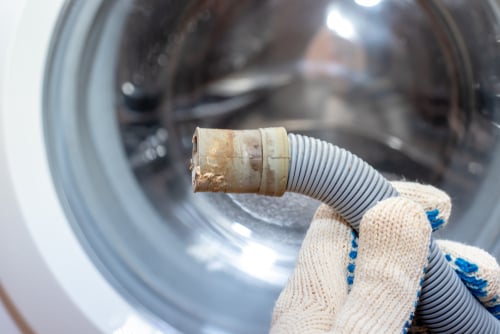Is your wall heater not heating? Does it turn on and off too often? Is the heater making noise but not getting hot? Frontdoor® has some fixes for these common wall heater issues.
Gas and electric wall heaters are one of the most efficient and effective ways to heat your home, because they allow you to heat only the room you’re using. Most heaters are able to heat a small-to-medium-sized room, meaning you could heat an entire one-bedroom apartment with just one or two wall heaters, and perhaps a baseboard heater in the bathroom.
But when one or more of your wall-mounted heaters isn’t working, things can get chilly quick. Before you call the repairman, know what causes common issues with gas and electric wall heaters, and how to repair them yourself.
Fixing Common Issues with Gas Wall Heaters
When a gas wall heater is not heating, it’s often a problem with the pilot light. These heaters work much the same way that a gas hot water heater does, with a pilot light that burns constantly and ignites the burner when the temperature falls below a certain point. Some, however, use an electric igniter that uses a spark to ignite the burner, like in many newer gas ovens.
The Pilot Won’t Light
If your pilot won’t light, your first step should be to check the gas supply to the heater. If your heater runs on propane, the tank might be empty. If it runs on natural gas, check to make sure the gas is turned on by checking the valve handle on the gas line. If it’s turned parallel to the pipe, it should be flowing.
If the gas is flowing but the pilot still won’t light, the pilot tube might be blocked. Reach into the combustion chamber and clear the tube with some compressed air. Turn off the gas and wait 10 minutes for any gas in the combustion chamber to dissipate before attempting to relight the pilot.
The Pilot Won’t Stay Lit
A pilot that won’t stay lit could be the result of a blockage in the pilot tube. Turn off the gas, clear the tube with compressed air, and relight the pilot. If that doesn’t work, you may need to call a repairman to come and install a new thermocouple. Frontdoor can help with this by sending a vetted Pro from our network for your service requests without haggling, homework or hassles.
Fixing Common Issues with Electric Wall Heaters
Electric wall heaters are very reliable, but like all appliances, they can sometimes have problems. Trouble with the power supply can cause an electric heater to malfunction, but so can faulty components.
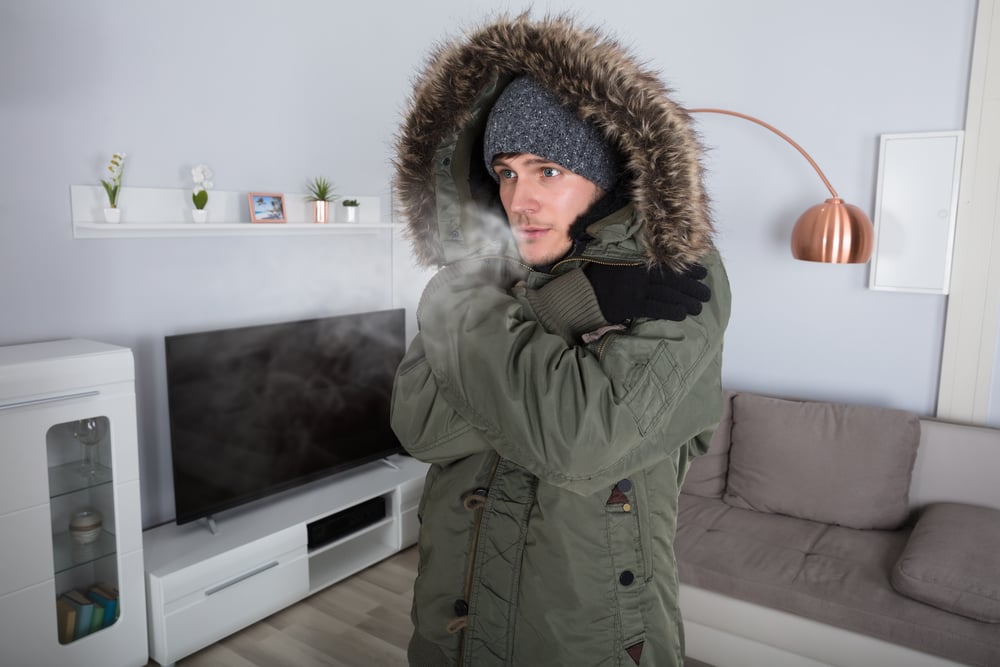
The Heater Has Stopped Working
If your heater isn't working at all, check for a tripped breaker or blown fuse. Reset the breaker or replace the blown fuse, if necessary.
If the problem isn’t with the breaker box, examine the unit’s wiring for loose connections. You’ll need to shut off the power to the heater and remove it from the wall in order to check the wiring connections. Remove the heater control knob, thermostat knob and faceplate to check for loose connections in these mechanisms. Tighten any loose wires.
Make sure the thermostat is set to the correct setting and that there’s plenty of clearance for airflow around the unit. If you still can’t get the heater working again, it probably needs a new heating element.
The Heater Turns On and Off Too Often
This could happen if curtains, plants, furniture or other objects are blocking airflow to the unit. It could also be the result of a faulty thermostat or control switch.
The Heater Fan Comes On, but the Heater Doesn’t Get Hot
This could be the result of a faulty heating element or loose wiring connections inside the unit. Cut power to the unit, remove the thermostat knob, control knob and faceplate, then remove the unit from the wall to check all the wiring connections inside. Tighten any disconnected or loose connections. If this doesn’t work, the unit may need a new heating element.
The Heater Gets Hot, but the Heater Fan Doesn’t Work
A number of problems could cause the fan to stop working, even though the heater is getting hot. Cut power to the heater, and open it up to check the wiring connections to and from the fan motor. Tighten any loose or disconnected wiring to the fan motor. Make sure nothing is obstructing the fan blades. If the fan still doesn’t work, you probably need a new fan motor.
The Heater Never Shuts Off
This is usually a sign that the room is either poorly insulated or too big for the heater, or both. Add weather stripping to doors and windows, and insulation to exterior doors and walls. Consider getting another heater for the space.
The Heater Makes a Burning Smell
This means that your heating elements are dirty. Lint, hair, and other debris can accumulate on heating elements, and can present a fire hazard or cause your heating elements to wear out prematurely. If you haven’t used your heater in a while, cut power to the unit, open it up then carefully clean the heating element with a vacuum.
When the weather turns nasty, the last thing you need is malfunctioning wall heaters. Learn to fix common wall heater issues yourself, so you can get toasty warm again faster.
Did you know you can improve your home’s comfort and energy efficiency by installing a smart thermostat? Plus, they are reasonably easy to install. Here’s how:
- Turn off power to the HVAC system at the breaker for all parts of your system.
- Next pop off the faceplate and remove the screws attaching the thermostat to the wall. It’s helpful to take a photo of the electric wiring so you can reconnect the wires later.
- Pull the thermostat wires through, then secure the backplate to the wall.
- Next, reconnect the wires using the photo you took earlier for reference and snap on the faceplate.
- Turn the breakers back on and connect your new smart thermostat to your Wi-Fi network.
Ready to take the next step in home ownership? Frontdoor® offers a variety of ways to get things done. Whether you prefer connecting via video chat with trade industry Experts, receiving a list of vetted Pros for repairs, or utilizing our how-to library to DIY, we've got you covered.
With the Frontdoor App, completing tasks has never been easier, so why wait? Open the Frontdoor and start taking control of your home repairs. Download the app today!
Frontdoor assumes no responsibility, and specifically disclaims all liability, for your use of any and all information contained herein.
Was this article helpful?

